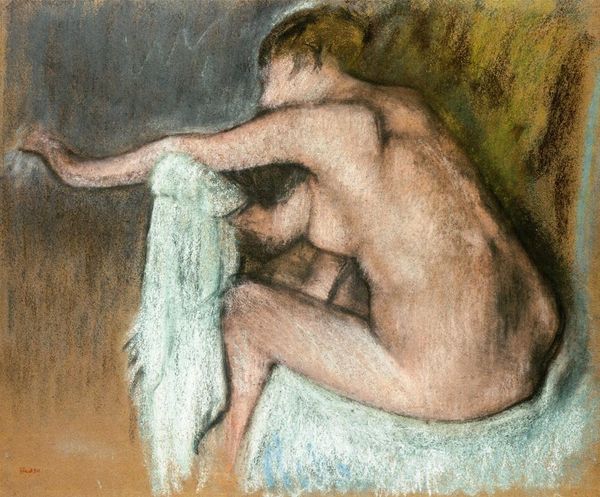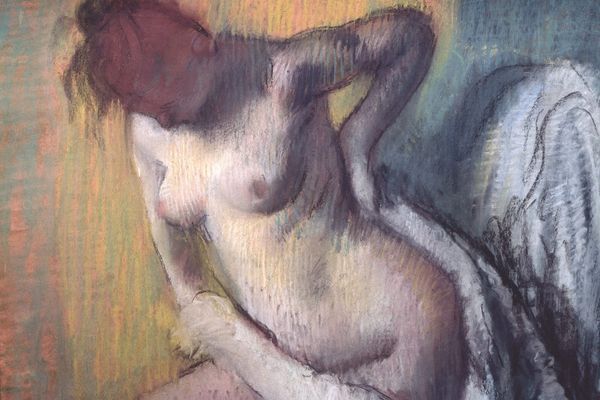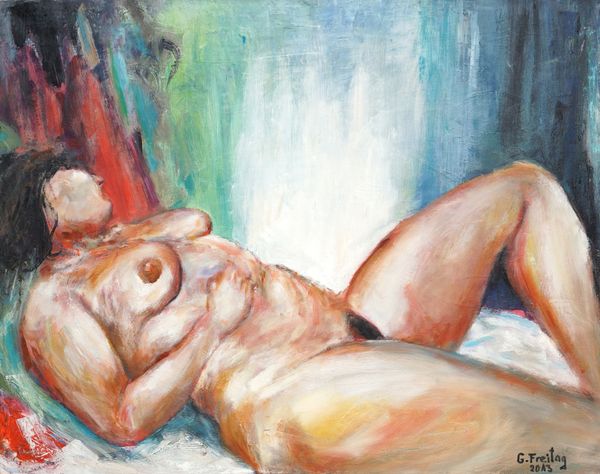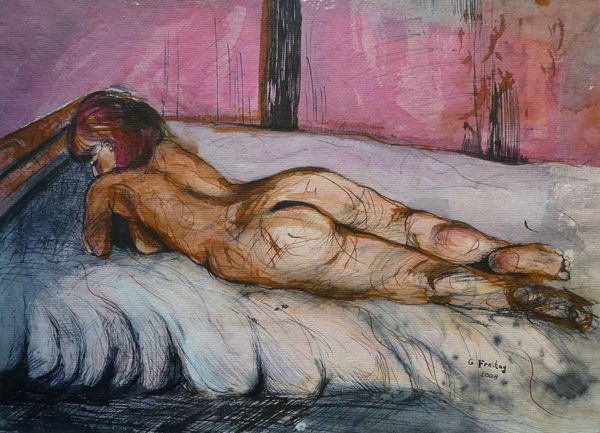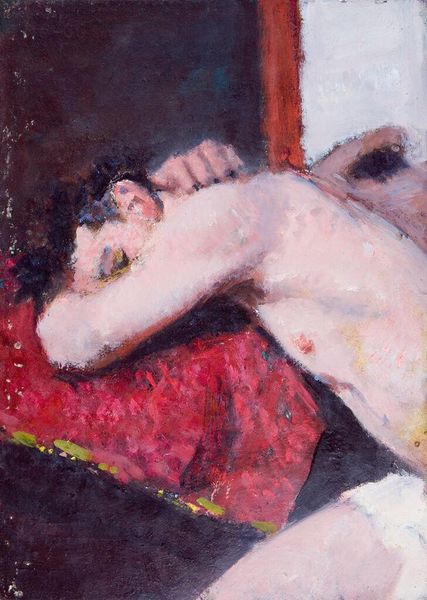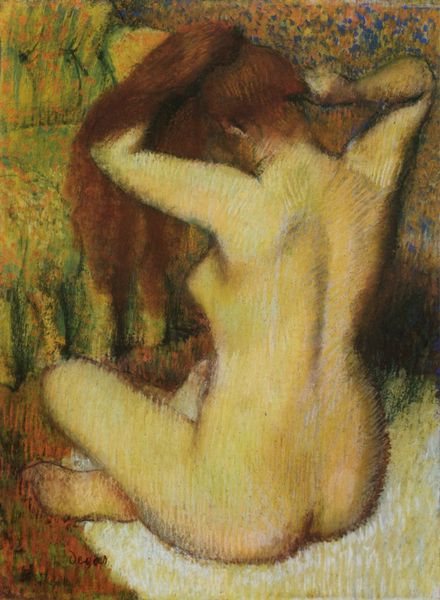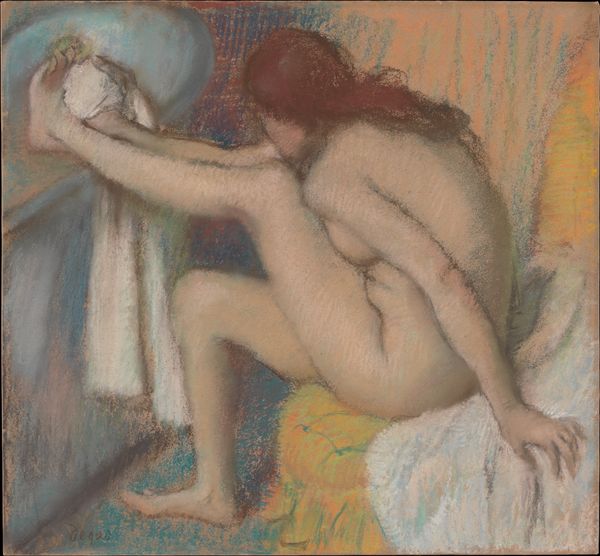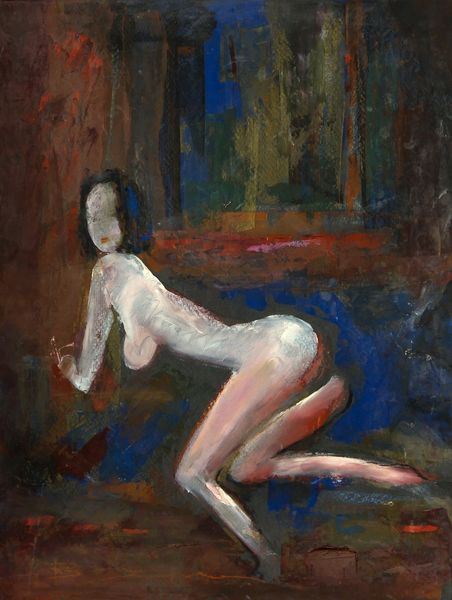
drawing, pastel
#
drawing
#
figurative
#
impressionism
#
figuration
#
possibly oil pastel
#
oil painting
#
intimism
#
genre-painting
#
pastel
#
nude
#
watercolor
#
erotic-art
Copyright: Public Domain: Artvee
Editor: So, we have Degas' "Bather Stepping into a Tub," circa 1890, likely pastel on paper. The first thing that strikes me is how intimate it feels, like we're intruding on a private moment. What do you make of it? Curator: The intimacy you observe is precisely where its historical weight lies. Consider the changing role of women and the depiction of the female nude in the late 19th century. Degas shifts from idealized, classical forms to a focus on the everyday, even the mundane. He's showing us a modern woman in her private space, devoid of the male gaze traditionally associated with nude painting. It reflects the rising influence of Realism and Impressionism, concerned with representing modern life honestly. Do you see the way this challenges established academic painting? Editor: I think so. It's not a goddess or an allegory; she's just a woman taking a bath. Almost shockingly ordinary. Curator: Exactly! And the pastel medium itself is crucial. It allowed Degas to capture fleeting moments, impressions of light and color, which aligns with Impressionistic ideals. But beyond that, pastel offered a certain intimacy, a directness of touch, aligning with the subject matter. The quick strokes almost mimic the fleeting nature of the bathing ritual itself. But does this raise any ethical questions? Editor: It does a bit. While it departs from older objectifications, are we really free from voyeurism? Is he celebrating female experience or exploiting it? Curator: Those questions are essential, and many scholars have debated that point. The very act of representation is never neutral, and Degas’ work prompts us to consider the complex relationship between artist, subject, and viewer within its social context. What do you think of its cultural relevance today? Editor: Well, I think we need to constantly interrogate these portrayals and acknowledge both the progress and the problematic aspects. Thanks; it's much more complex than I initially perceived! Curator: Indeed. Art history isn’t just about aesthetics; it's about understanding the visual politics that shape our perceptions.
Comments
No comments
Be the first to comment and join the conversation on the ultimate creative platform.


